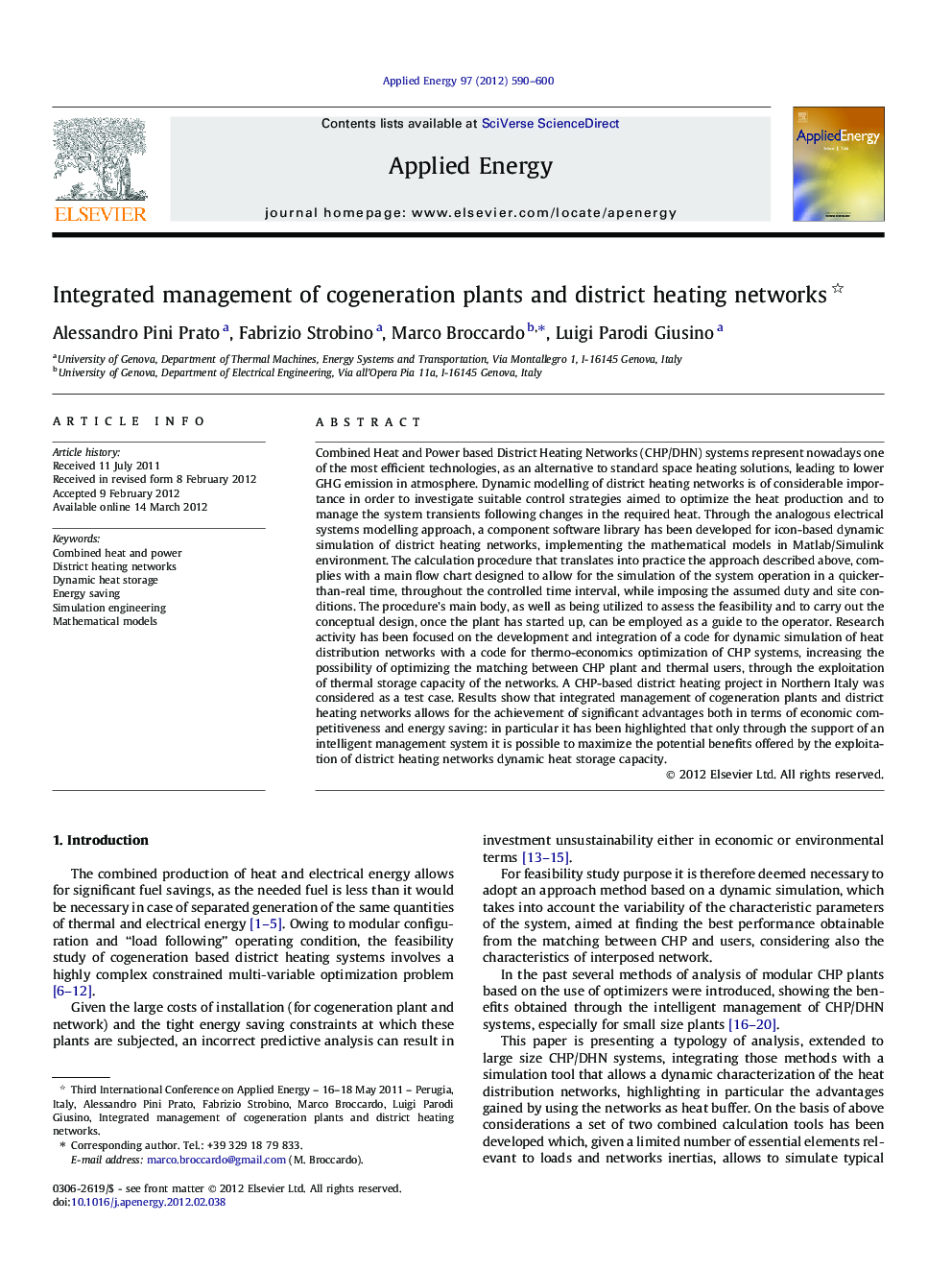| Article ID | Journal | Published Year | Pages | File Type |
|---|---|---|---|---|
| 243542 | Applied Energy | 2012 | 11 Pages |
Combined Heat and Power based District Heating Networks (CHP/DHN) systems represent nowadays one of the most efficient technologies, as an alternative to standard space heating solutions, leading to lower GHG emission in atmosphere. Dynamic modelling of district heating networks is of considerable importance in order to investigate suitable control strategies aimed to optimize the heat production and to manage the system transients following changes in the required heat. Through the analogous electrical systems modelling approach, a component software library has been developed for icon-based dynamic simulation of district heating networks, implementing the mathematical models in Matlab/Simulink environment. The calculation procedure that translates into practice the approach described above, complies with a main flow chart designed to allow for the simulation of the system operation in a quicker-than-real time, throughout the controlled time interval, while imposing the assumed duty and site conditions. The procedure’s main body, as well as being utilized to assess the feasibility and to carry out the conceptual design, once the plant has started up, can be employed as a guide to the operator. Research activity has been focused on the development and integration of a code for dynamic simulation of heat distribution networks with a code for thermo-economics optimization of CHP systems, increasing the possibility of optimizing the matching between CHP plant and thermal users, through the exploitation of thermal storage capacity of the networks. A CHP-based district heating project in Northern Italy was considered as a test case. Results show that integrated management of cogeneration plants and district heating networks allows for the achievement of significant advantages both in terms of economic competitiveness and energy saving: in particular it has been highlighted that only through the support of an intelligent management system it is possible to maximize the potential benefits offered by the exploitation of district heating networks dynamic heat storage capacity.
► Development of AEDO code for dynamic simulation of heat distribution networks. ► Integration of AEDO code with DIOGENE code for optimized management of CHP systems. ► Exploitation of district heating networks dynamic heat storage capacity. ► Application of simulation method to a CHP-based district heating project in Italy. ► Analysis of advantages both in terms of economic competitiveness and energy saving.
